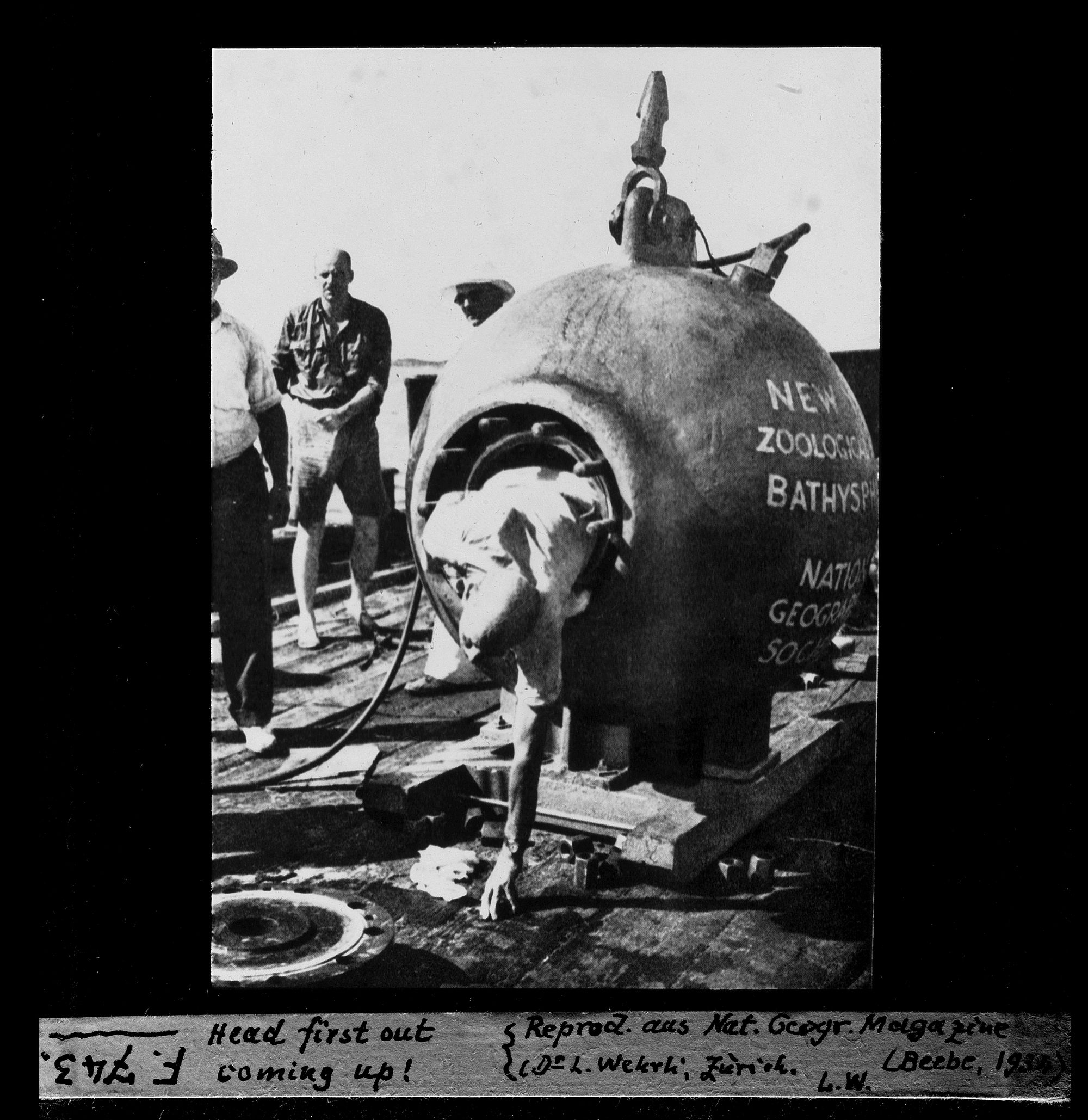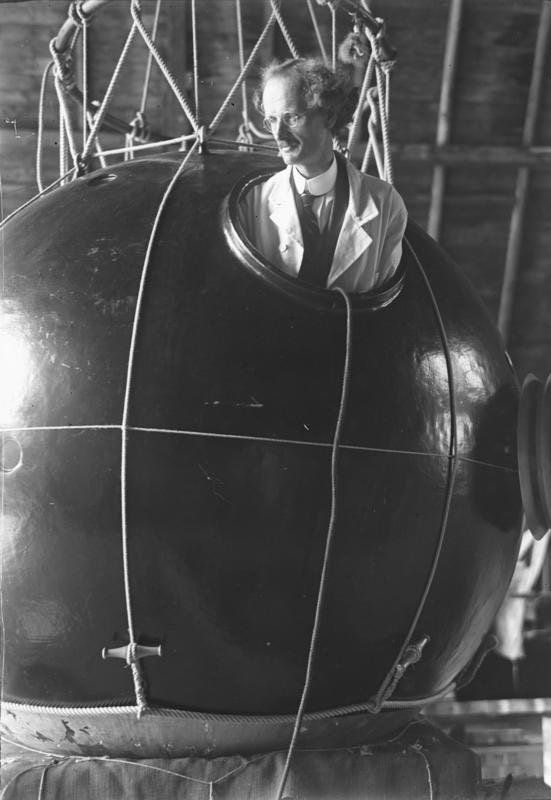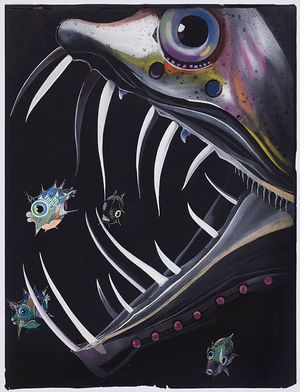While the Titan submersible was a truly wild story to watch unfold, it's part of a long lineage of people trying to explore dangerous environments in terrifying and risky ways. The Titanic wreckage has laid 3.8 kilometers (12,500 feet) below the surface of the water for more than a century, but for much of that time humans have been unable to dive deeper than a few hundred meters. Before that, countless military, science, and other explorers tried machines made from anything from greased cowhide to enclosed steel spheres to explore the depths – and the skies.
Looking back on early underwater exploration, the carbon fiber hull of the Titan might feel even comforting compared to other diving contraptions. In the 18th century, British inventor John Lethbridge created a diving machine out of a large oak cylinder, in which the diver could lay on their stomach with their arms in leather sleeves, peering through tiny windows on the bottom in order to collect salvage on the ocean floor. While Lethbridge imagined that it could go up to 22 meters (72 feet), in reality it began to leak at about 7 meters, which I personally find much more horrifying than the hull instantaneously imploding. Venturing out of our atmosphere is no small feat, and ultimately it requires experimentation and taking risks.
-lee wilkins
The most clicked link from last week's issue (~12% of opens) was a wall of lava lamps that encrypt the internet. In the Members' Slack, the #general-questions channel has been fielding queries about managing version control with non-technical team members and how to frame a lot of art inexpensively – while there is no perfect solution for either problem, there are many possible ways to tackle them!
PLANNING & STRATEGY.
When designing any sort of crewed underwater suit or vessel, the primary goal is to stop the intense water pressure from crushing the wearer or crew. One might think the opposite would be the main barrier while designing a space suit, and it is certainly a concern. But one of the biggest problems during the Apollo program was preventing lunar dust from destroying the delicate instruments and carefully crafted space suits.
Lunar dust particles tend to be sharper and more abrasive than those on Earth, where our wind and water erode them down from jagged shards into roundish balls. Lunar dust was a huge problem during the Apollo program: inhaling it caused the astronauts to feel sick; it damaged space suit exteriors; it got inside the locking mechanisms for helmets and gloves. Lunar dust contains silicate, which has been linked to lung scarring and damage in mine workers on Earth. A number of interesting solutions have been developed to manage dust on the upcoming Artemis missions, such as a dust-repellent material inspired by a lotus leaf, and a Moon duster, which is a hand-held electron beam device to clean off surfaces.
MAKING & MANUFACTURING.
From 1930 to 1934, British explorer and scientist William Beebe conducted a series of underwater expeditions from Nonsuch Island in Bermuda. Having established a research center there, his original mission was to use nets to dredge the ocean floor within a 13 kilometer (8 mile) radius of the island. But he soon realized the vastness of the ecosystem meant there was only one way to truly understand it: to build a vessel capable of descending into the water to observe the wildlife in its natural habitat.
Beebe worked with engineer Otis Barton, who proposed a spherical design with three 76 mm thick fused quartz windows. Beebe named it Bathysphere, and after a failed attempt in 1929 (the vessel was too heavy to be lifted into the water), it was melted and recast as a 25 millimeter thick steel sphere that was 1.45 meters in diameter. There were three cables connecting the Bathysphere to the surface: one supplied power for a small lightbulb to observe the wildlife, a second was connected to a winch, and a third functioned as a telephone line to communicate with the crew above water.The Bathysphere also had a unique air circulation system, which used high pressure cylinders of oxygen. Pans of soda lime and calcium chloride on the sphere’s walls absorbed CO2 from the crew, who used palm-leaf fans to circulate the air.

MAINTENANCE, REPAIR & OPERATIONS.
Beebe was not the only scientist-explorer floating around in a ball in the 1930s. In 1931, Swiss physicist Auguste Piccard was preparing the Explorer II, an aluminum sphere commissioned by a brewing company, to ascend to the stratosphere with a balloon. Piccard was primarily known for his research on cosmic rays, and he wanted to travel without being limited by an atmospheric suit. Explorer II’s inaugural journey commenced ahead of schedule, launching by accident during safety checks, but Piccard and his assistant Kipfer did achieve a record height of over 15,000 meters. During their flight, a barometer broke and spilled mercury in the cabin, which threatened to eat through its aluminum walls and forced them to make an emergency landing on a glacier in Austria. A few years later, Piccard invented the bathyscaphe, which is similar to the Bathysphere except that it descends by flooding air tanks with sea water. A subsequent bathyscaphe would be the first crewed vessel to reach the deepest point on Earth in the Mariana Trench. Piccard wrote about his adventures in the stratosphere and deep ocean in Earth, Sky and Sea.

DISTRIBUTION & LOGISTICS.
Both the Bathysphere and Piccard's bathyscaphes were more or less self-contained vessels which carried their own air – but they still relied on a team above water to keep them safe using a tether or umbilical. Diving bells have used umbilicals for millenia (they’ve been documented as early as the 4th century BCE), and are still used today for underwater work. A wet bell has an open bottom, where pressure creates a pocket of breathable air inside the bell; additional breathing air is pumped down to the bell via an umbilical, which may also carry power and communication lines. Similar umbilicals made out of nylon and heat-treated protective gold layering were used to tether the Gemini astronauts flights in 1965-66. There are many parallels between underwater and outer space technologies!
INSPECTION, TESTING & ANALYSIS.
During his dives, Beebe described what he saw to Gloria Hollister, who was listening over the Bathysphere’s communication tether. Any silence on the line would be interpreted as a disaster, so the two scientists had to maintain constant communication. Hollister relayed Beebe’s observations to Else Bostelmann, who tried to identify creatures he described, and eventually painted many of them. Beebe’s descriptions were vague, but intriguing:
1300 feet: 6 or 8 shrimps.
50 or 100 lights like fireflies.
Small squid in beam of light,
seems to have no lights, went down to bait.
Cyclothones. Two-inch shrimps.
Bostelmann also set up some underwater journeys of her own. Donning a 27 kg diving helmet and using a zinc engraver plate and steel pen, she descended 11 meters to the ocean floor to sketch coral and plant life.

SCOPE CREEP.
I really enjoy the aesthetic of these alien-like 1878 smoke helmets, and these German porta-sprinklers that look like umbrellas mounted to firefighters’ heads. These early drag racing fire suits also went through an intense evolution from leather jackets to Nomex suits and breathing masks.
Some other approaches to underwater exploration I came across are pretty far-fetched too. In the 1500s, Dutch physicist Cornelius Drebbel modified the designs of carpenter William Bourne to create an early submarine, a rowboat-like contraption enclosed in greased leather, which took 12 oarsmen to operate. More on the individual person scale, The Old Gentleman of Raahe was an 18th- century Finnish diving suit made entirely out of greased up cowskin. I also like the Greek diving technique called Skandalopetra where divers used heavy weights to collect sea sponges.
Thanks as always to Scope of Work’s Members and Supporters for making this newsletter possible.
Love, lee
p.s. - What's your favorite dangerous deep sea technology? I’d love to hear about it, email me at hello@leecyb.org!
p.p.s. - We care about inclusivity. Here’s what we’re doing about it.




